Succulents make excellent low-care houseplants when they’re grown in suitable soil. Let’s discover the best soil for succulents, including a few top mixes, and finish up with critical care tips to keep your succulents in tip-top condition.
What Is a Succulent?
Succulents hold water in their thick, fleshy leaves. The name succulent actually comes from the Latin word “sulcus,” which means sap or juice. Thousands of succulent species are growing across the globe in areas with little rainfall. Succulents chiefly thrive in deserts and the alpine regions.
Cacti are a succulent type, as are garden Euphorbia and houseplant Haworthia. The range is huge, but what they have in common are specific growing conditions that include lots of light, warmth, infrequent water, and well-drained soil.

There are over 10,000 succulents, including this string of tears from South
Africa
.
©panattar/Shutterstock.com
The Best Soil for Succulents
The best soil for succulents provides three critical aspects. Nutrients, an anchoring base for its roots, and a medium to absorb adequate moisture. They do best in free-draining sandy soil that replicates their native environment.
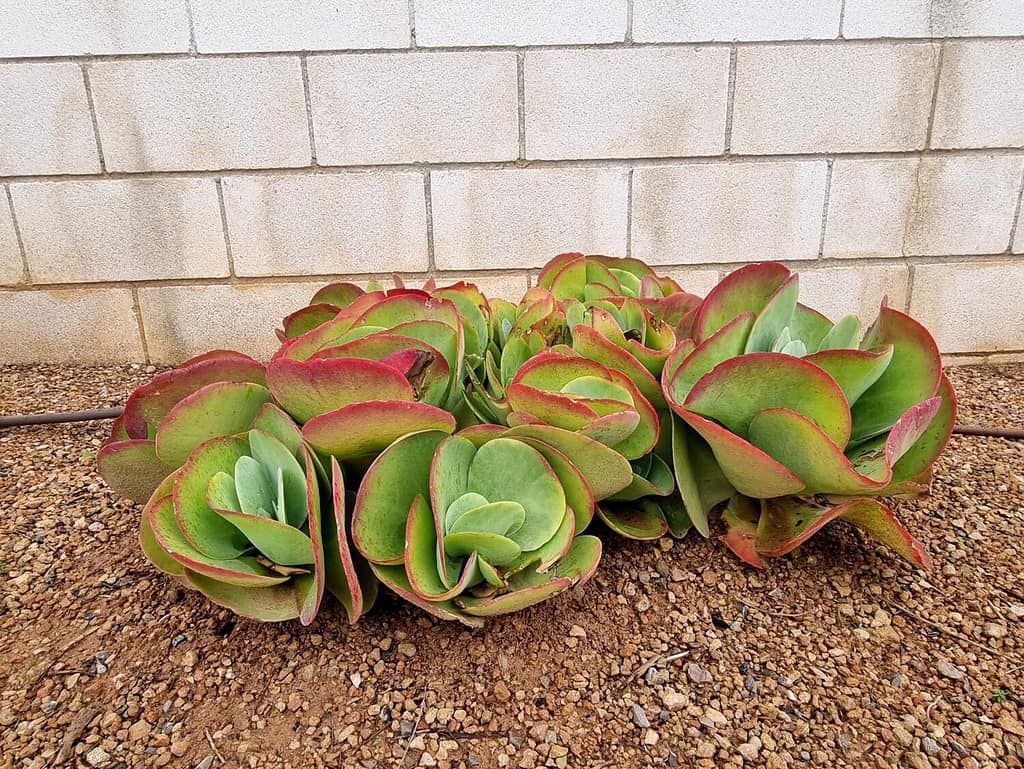
Good succulent soil provides nutrients, anchorage, and moisture absorption.
©lauraag4/Shutterstock.com
What Does Well-Drained Mean?
Succulents die in consistently damp soil. Unlike leafy ferns that require moist soil, succulents need soil that quickly filters out water and dries out fast. This means that loose, grainy soil is best.
The best succulent soil dries out after a day or two – that’s how little dampness succulents need.

The best succulent soil dries out rapidly because it’s full of inorganic matter like perlite.
©Reda.G/Shutterstock.com
Good Aeration Is Essential
Succulents need air. In fact, all plants need air on their roots, but succulents need more. It’s just how they evolved. Inorganic matter in succulent soil creates good aeration. Sticky, compacted, wet soil without air pockets is a slow death trap for succulents because their roots can’t breathe.
Inorganically rich soil substrate creates lots of air pockets that drain water out fast and let in air.

Good aeration of the foliage and roots is essential for happy succulents.
©Marta Nogueira/Shutterstock.com
The Right Composition
Succulent substrate is a better description than “succulent soil” because soil indicates earth and compost. What succulents actually need is a mixture of organic and inorganic matter. Organic matter is soil, bark, leaves, compost, and coir, whereas inorganic matter includes rocks, perlite, clay, and sand.
The more inorganic material succulent soil holds, the quicker it drains. It’s the organic material that holds onto dampness.
Here are several succulent soil recipes that let go of water quickly and let in air but still provide nutrients for healthy succulents.
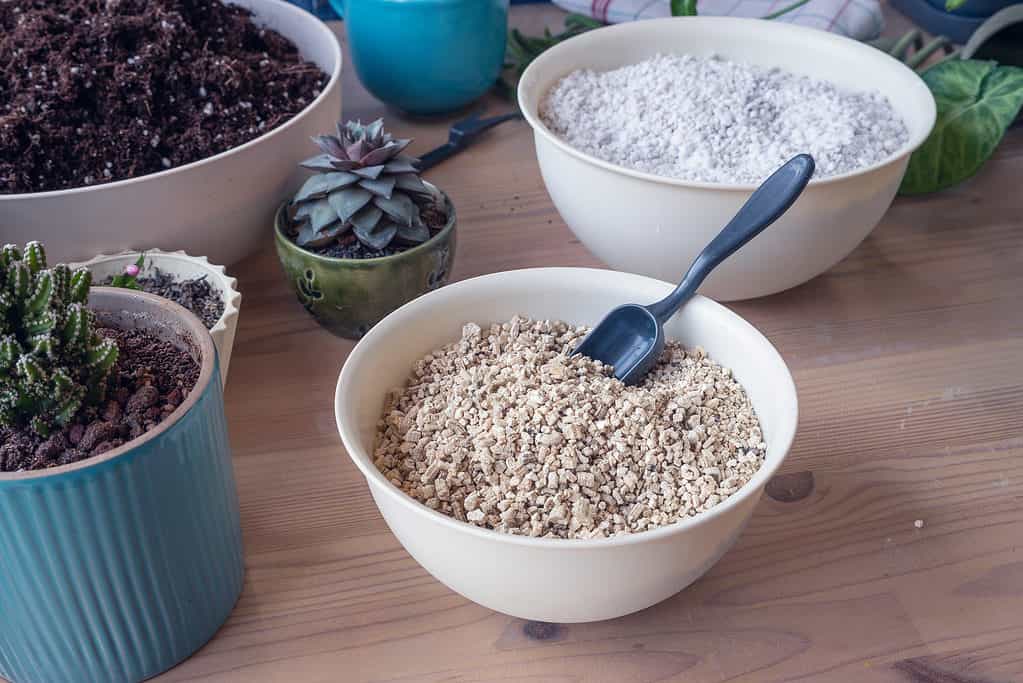
Perlite is an excellent inorganic matter in the best succulent soil.
©iStock.com/CemSelvi
Succulent Soil Recipes
The best soil for succulents comprises around 1/3 of organic matter and 2/3 of inorganic matter.
Here’s a list of the materials you can use to make the best soil for succulents.
Good organic material for succulent soil:
- Compost
- Pine bark
- Coir
- Potting soil
Good inorganic materials for succulent soil:
- Coarse sand
- Perlite
- Pumice (volcanic rock)
- Rinsed fine gravel or grit
Recipe 1
- Soil (organic matter)
Create the best succulent soil by mixing:
- One part coir
- One part perlite
- One part compost
This creates an excellent potting mix. Note the soil aspect contains one part of inorganic matter for extra drainage and airflow. However, this is the gold standard and not necessary. You can use standard compost or choose from the organic list above.
- Coarse sand – increases drainage by breaking up compost (inorganic matter)
- Perlite – aids drainage and aeration (inorganic matter)
Now mix up two cups of your new soil mix, plus two cups of coarse sand and one cup of perlite.
Recipe 2
Two cups of succulent soil, two cups of pumice, and one cup of sand.
Recipe 3
Two cups of pine bark, two cups of coarse sand, and one cup of fine grit.
Recipe 4
Two cups of coir, two cups of gravel, and one cup of volcanic rock.
Of course, if time is pressing, or you don’t feel inclined to make up succulent soil, there are plenty of commercially available pre-mixes for succulents and cacti that work well.

Succulent soil should comprise roughly 1/3 of organic and 2/3 of inorganic matter.
©iStock.com/naramit
Critical Care Tips
That’s the free-draining aerated soil sorted out for succulents, but what else is critical?
1. Water Requirements
Water succulents when the soil is dry. This might be every week if you’ve got a really good succulent soil going on.
Soak the roots in a sink of water and then let them drain out on the draining board before popping the plant back into the display pot.
Succulents like to dry out quickly, so leftover water hanging around in the pot will just cause problems in the form of root rot. Try sprinkling grit or perlite into its display pot to raise its roots, just in case water continues to drain out. This avoids stagnation.
Succulents do not need daily water because it’s stored in their fleshy leaves, and in their dormant winter period, succulents need even less water. They don’t grow when it’s cool, so they don’t use as much water. Twice a month, soaking is usually adequate. Less is most definitely best.
Signs of overwatering a succulent include small white blisters, white or brown patches, soggy outer leaves, smelly soil, and, in the worst case, collapsing mushy leaves.

Unless propagating, succulents must drain water quickly and freely.
©NatVV/Shutterstock.com
2. Succulent Light Requirements
These pretty houseplants come from dry, desert-like, or alpine environments, so they need lots of light. Six hours of bright light a day is required, and most succulents can deal with direct sunlight for a few hours, too. However, a full six to eight hours in direct sun might cause blisters, so set windowsill succulents back a little from full frontal sunshine assault.
Too much sun creates brown or tan patches, fading green pigment, and falling crispy leaves. Try rotating succulents a quarter turn each week so light reaches all its foliage. This helps promote equal growth and prevents lean.
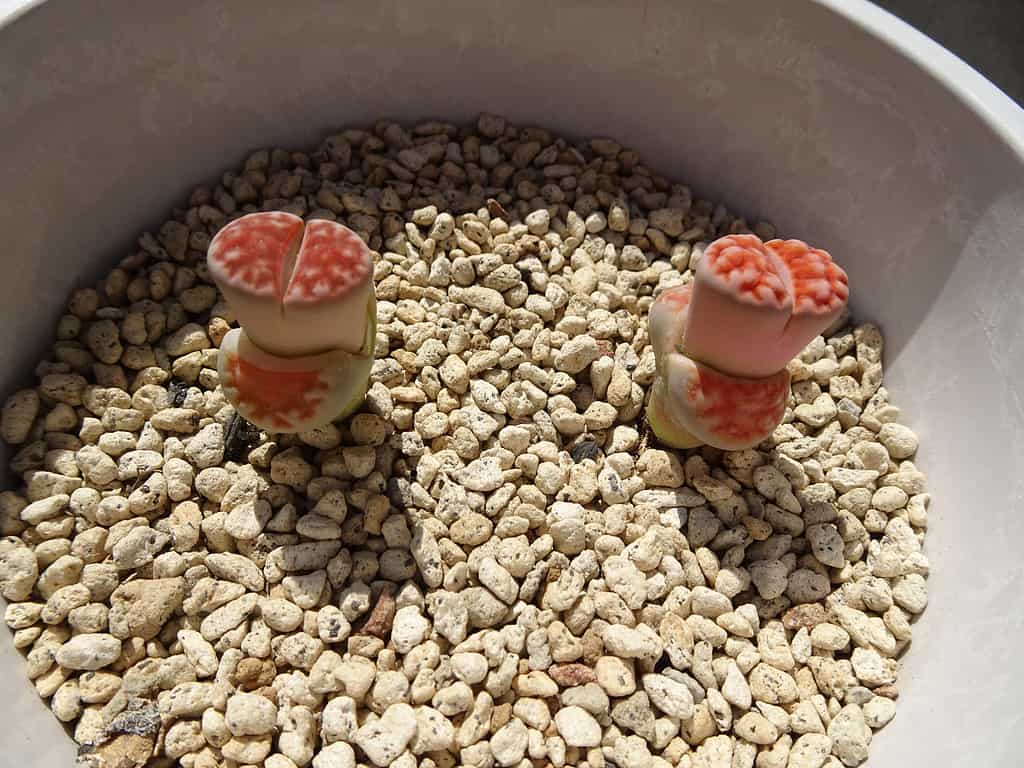
Succulents need lots of sunlight, preferably six hours a day.
©iStock.com/kazumi miyamoto
3. Don’t Use Glass Containers or Terrariums
Succulents under glass often suffer the consequences of too much moisture and not enough air circulation. In the wild, drying sun and wind keep succulents moisture-free. A damp terrarium or a glass pot without drainage usually leads to slow decay.

Succulent terrariums aren’t a good idea because they trap moisture.
©Erlangs_Photoworks/Shutterstock.com
4. Keep Succulents Warm
Avoid chilly spots and draughty areas because succulents need consistently warm temperatures. A cold succulent won’t grow. The best temperature for most succulents is between 50 – 60 degrees Fahrenheit.
Outside this range, you might spot black patches or rough-textured foliage.
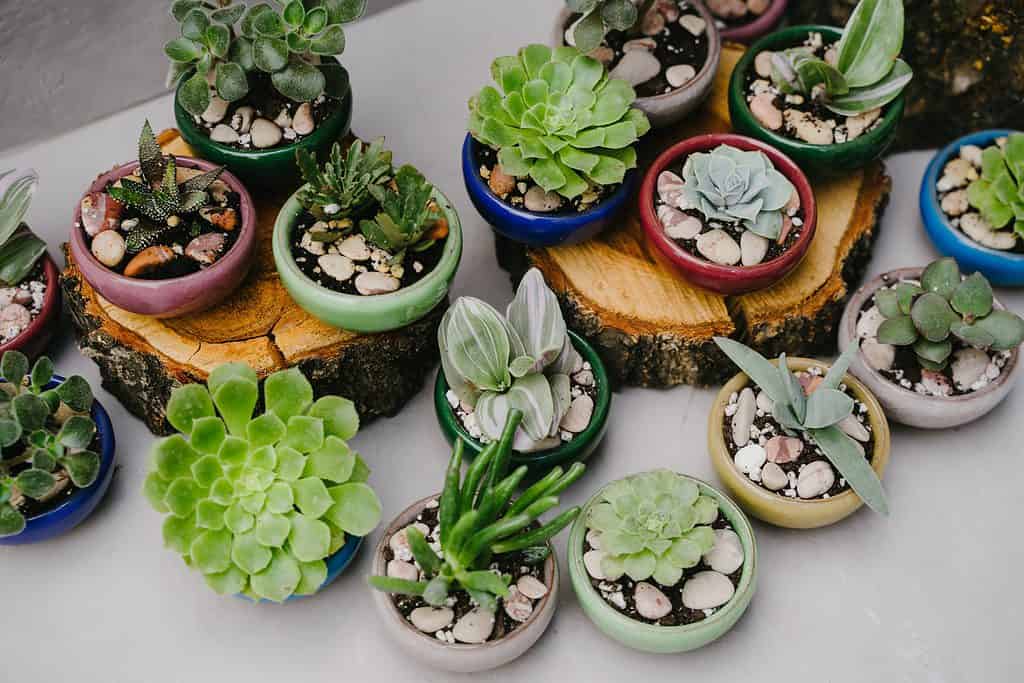
Indoor succulents need warmth, or they will not grow.
©Alice Rodnova/Shutterstock.com
5. Do Succulents Need Fertilizer?
Although succulents need very little in the way of nutrients, a monthly feed in the growing season helps boost their color and can lead to flowering in some species.
Choose good quality cacti or succulent fertilizer and follow its instructions to the letter because too much fertilizer poisons a succulent and leads to irreversible decay. Don’t use general household plant food on succulents (or orchids). It’s way too strong.
Signs of too much fertilizer include yellowing, soggy, and collapsing foliage.
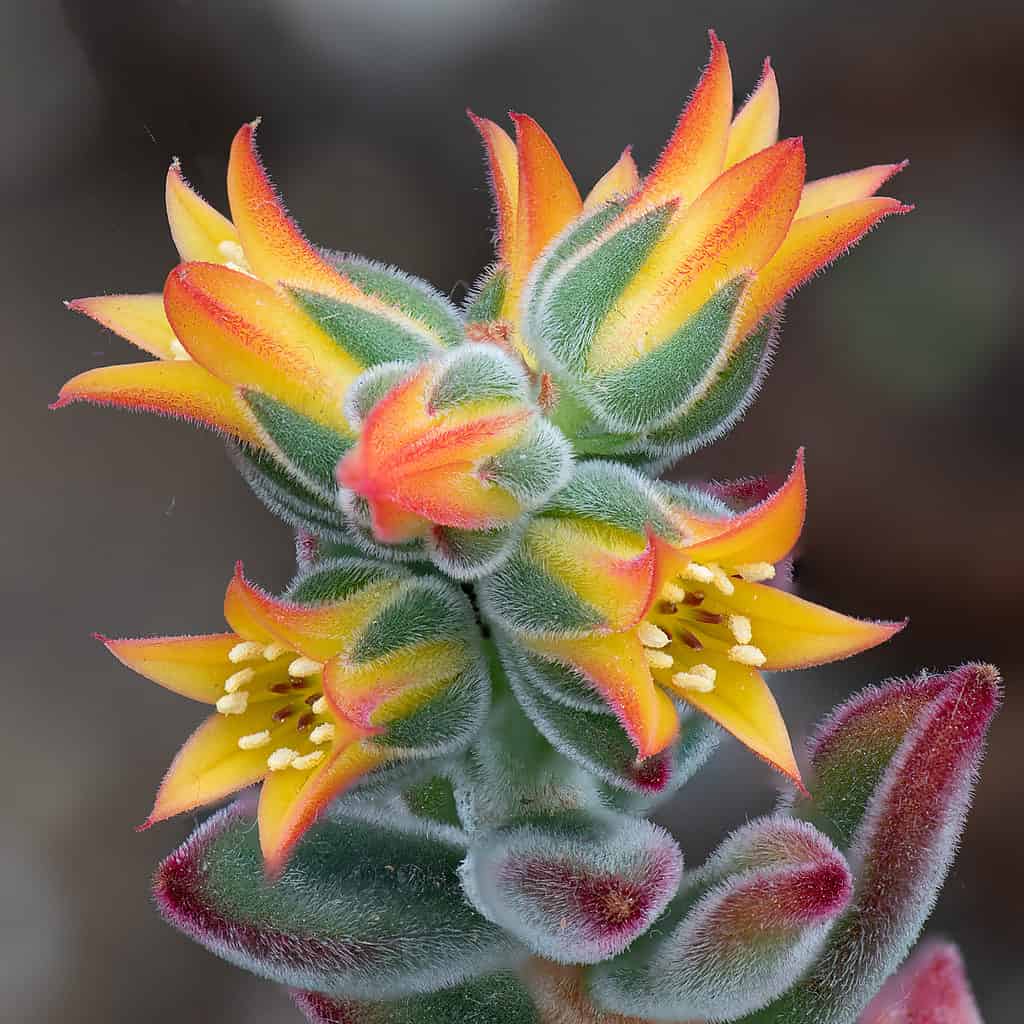
Monthly succulent-specific fertilizer encourages flowers.
©Michael Eaton/Shutterstock.com
6. How to Get Rid of Succulent Pests
Growing succulents in the best soil, giving them plenty of light, and keeping them warm prepares them for pest attacks. Strong succulents are more likely to survive pests.
Look out for:
Mealy bugs: These miniature white pests cling onto succulent foliage and drink its sap like mini vampires. They squeeze into the gap between stalk and foliage, which makes it even harder to spot them.
One of the first mealy bug signs is a succulent that isn’t performing well despite the best soil, light, and warmth. Get rid of mealy bugs with rubbing alcohol or insecticidal soap.
Fungus Gnats: Annoying fungus gnats don’t hurt succulents, but it’s incredibly irritating when one flies around your face.
Gnats appear when soil is too damp, so making sure a succulent’s soil is dry before watering and using the best free-draining substrate quickly removes gnats.
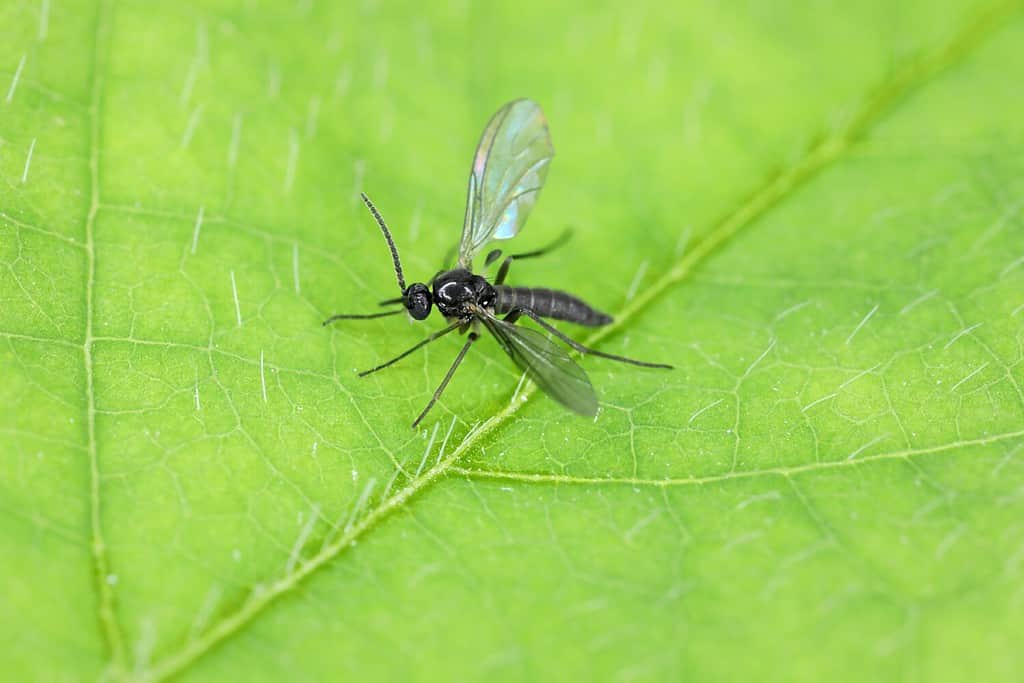
Tiny fungus gnats lay eggs in damp soil. Let succulents dry out to remove them.
©Tomasz Klejdysz/Shutterstock.com
Best Succulent Soil: Recap
The best succulent soil is a mixture of organic matter to provide nutrients and inorganic matter to create rapid drainage and healthy air circulation.
Buy commercially made succulent mix, or create your recipe of two cups organic matter, two cups inorganic matter, and one cup coarse sand. Standard houseplant compost won’t cut the mustard here. If you have some, use it by all means, but first mix it up with perlite, grit, sand, or pumice to create that gritty substrate that succulents thrive in.
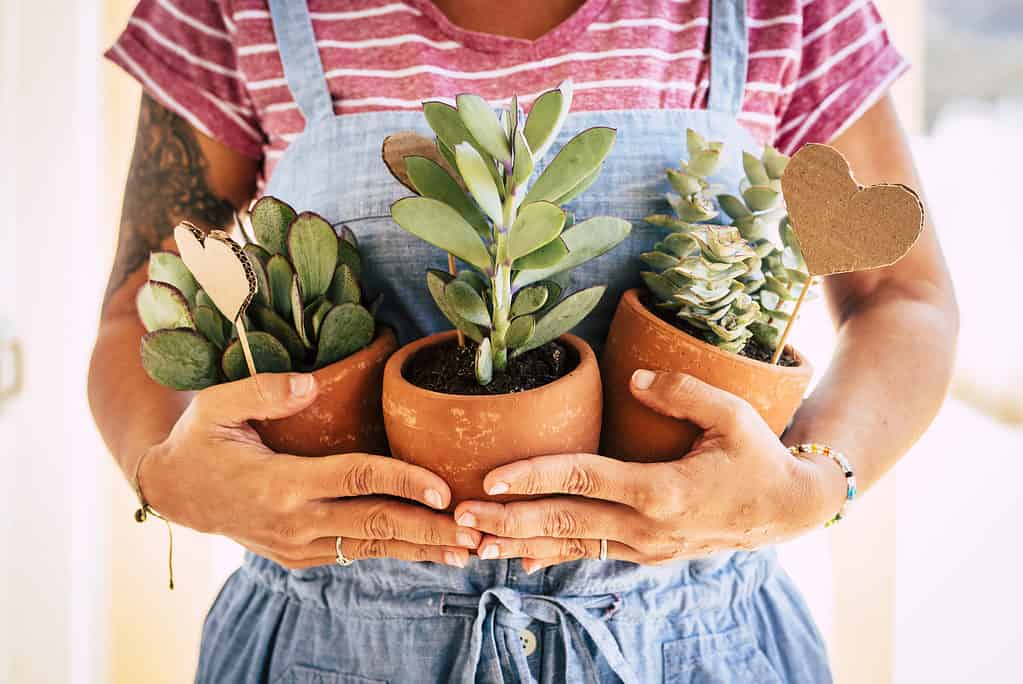
The best succulent soil is full of perlite, grit, sand, or pumice to encourage quick draining.
©iStock.com/simonapilolla
The photo featured at the top of this post is © iStock.com/evgenyb
Thank you for reading! Have some feedback for us? Contact the AZ Animals editorial team.







